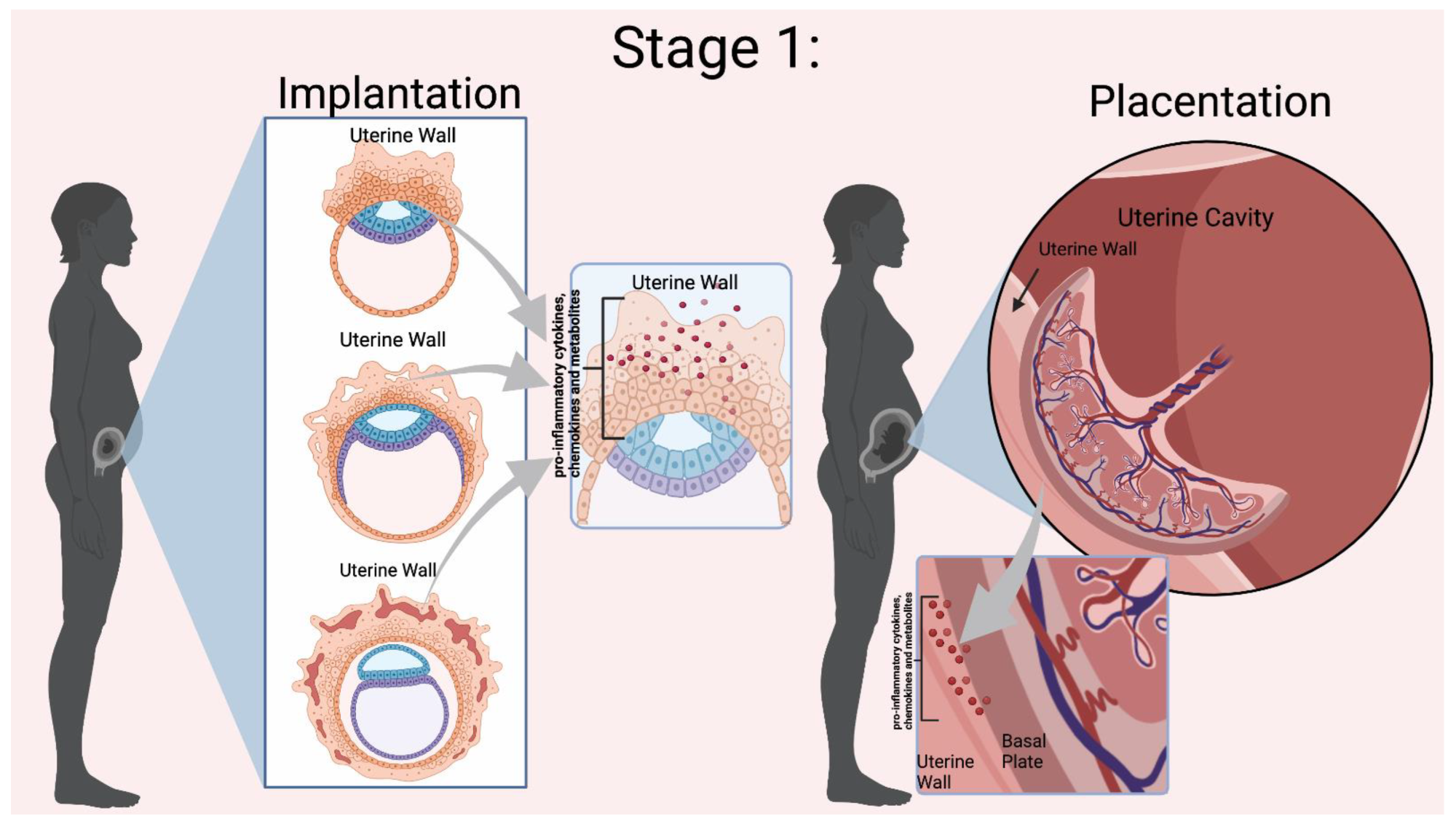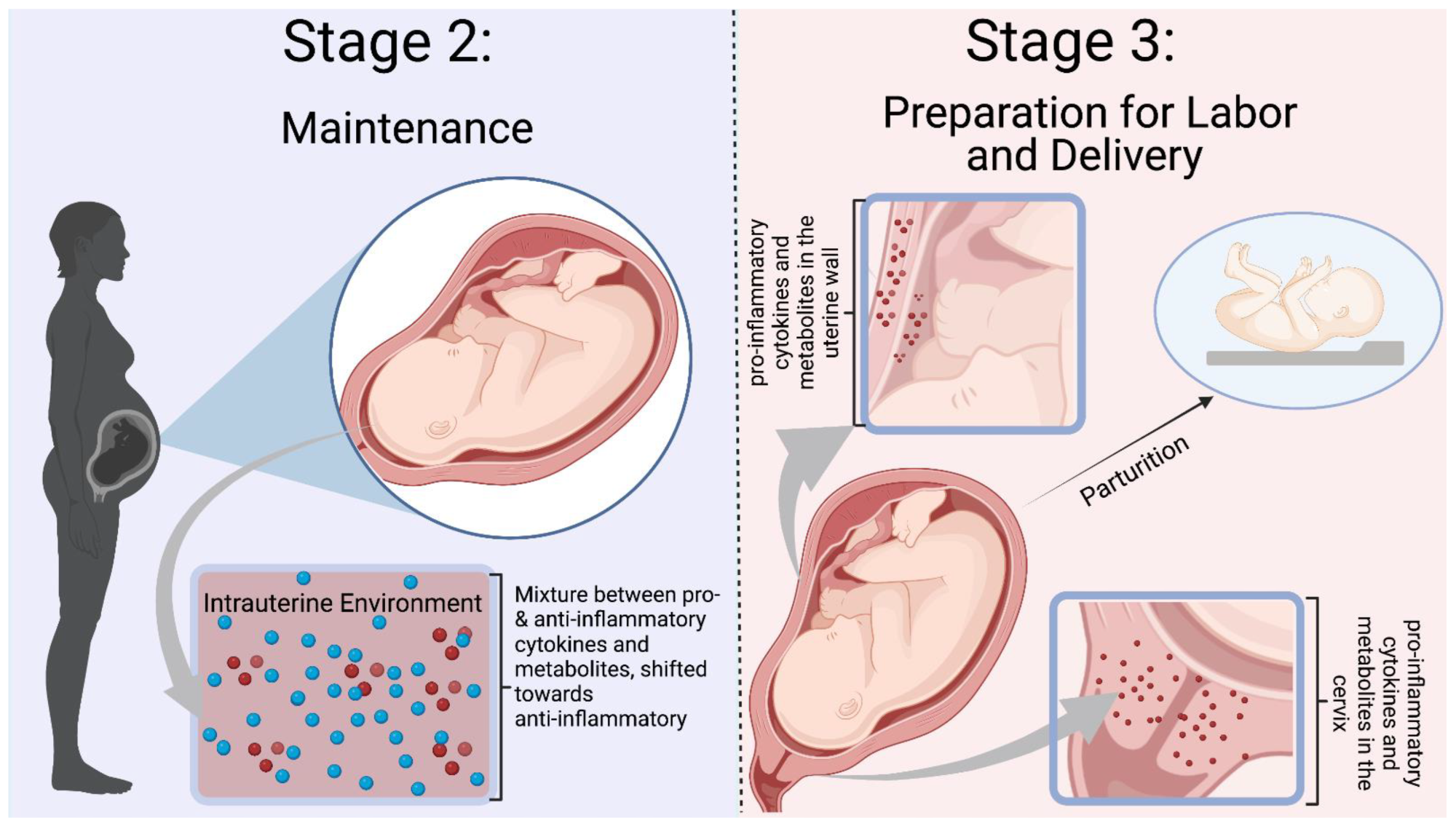During normal pregnancy, inflammation is associated with placentation, implantation, and parturition. Uncontrolled inflammation could lead to severe adverse effects on the mother and infant. Therefore, it is essential to understand molecular interactions taking place during the controlled inflammation during pregnancy.
 Study: Something Smells Fishy: How Lipid Mediators Impact the Maternal–Fetal Interface and Neonatal Development. Image Credit: ldutko / Shutterstock
Study: Something Smells Fishy: How Lipid Mediators Impact the Maternal–Fetal Interface and Neonatal Development. Image Credit: ldutko / Shutterstock
Omega-3 and -6 fatty acids ingested through the diet are metabolized into bioactive compounds that influence inflammation. In a recent the journal Biomedicines study, scientists reviewed the existing literature and summarized their findings related to the role of omega-3 and omega-6 metabolites during pregnancy.
What is Inflammation?
Inflammation is an important biological activity required to defend the body against infections. It has been documented that inflammation suppresses and prevents infection. In addition, it is involved with resolving tissue injury and promoting tissue repair and regeneration.
Inflammation is facilitated by chemokines and cytokines affecting blood vessels, tissues, and nerves. Manifestation of inflammation could be determined by the five most common signs, i.e., pain, fever, loss of function, redness, and swelling. An inflammatory response is regulated by pro- and anti-inflammatory molecules. It has been observed that anti-inflammatory molecules are synthesized simultaneously to alleviate inflammation.
Diet can help resolve inflammation. Omega-3 fatty acids (n-3 FAs) and Omega-6 fatty acids (n-6 FAs) are involved with several important bodily functions, including regulating the inflammation system.
 Mor et al. Stage 1 of Immunological Events Occurring During Pregnancy. Implantation relies on the presence of pro-inflammatory cytokines, chemokines, and other mediators to invade the uterine wall. During placentation, there is a dynamic relationship between the uterine wall and the placenta for trophoblast differentiation and proper placental development. Inflammation is indicated by the red dots in the Figure. Figure created in BioRender.
Mor et al. Stage 1 of Immunological Events Occurring During Pregnancy. Implantation relies on the presence of pro-inflammatory cytokines, chemokines, and other mediators to invade the uterine wall. During placentation, there is a dynamic relationship between the uterine wall and the placenta for trophoblast differentiation and proper placental development. Inflammation is indicated by the red dots in the Figure. Figure created in BioRender.
Association Between Inflammation and Nutrition During Pregnancy
The body heavily relies on inflammation in three distinct phases of pregnancy. Firstly, during the early phase of pregnancy (the first and second trimester), when implantation and placentation occur. In this phase, inflammation allows placental cells to establish the maternal–fetal blood flow. Secondly, during mid-pregnancy, when the fetus grows at a rapid pace within an anti-inflammatory environment. Lastly, late pregnancy is inflammatory as mothers begin to prepare for delivery.
The role of n-3 FAs and n-6 FAs in the different stages of inflammation has been elucidated. It is crucial to obtain essential FAs, such as linoleic acid (LA) and alpha-linolenic acid (ALA), from the diet. LA is the main source of dihomo γ-linolenic acid (DGLA) and arachidonic acid (AA). Likewise, ALA is the parent nutrient from which eicosapentaenoic acid (EPA) and Docosahexaenoic (DHA) are synthesized. In the majority of cases, inefficient conversion of ALA to EPA or DHA has been observed, i.e., 8–10% of ALA was found to be converted to EPA, while less than 1% to DHA. Hence, it is important to consume DHA and EPA through diet to reach the recommended level.
There is a lack of consistent guidelines regarding the optimal amount of daily intake of n-3 FAs during pregnancy. However, approximately 200g of EPA and DHA per day has been recommended. In the US, the diet of pregnant women is often rich in n-6 FAs and low in n-3 FAs, which enhances the risk of poor maternal–infant outcomes due to dysregulated inflammation.
 Mor et al. Stages 2–3 of Immunological Events Occurring During Pregnancy. Stage 2 is defined by a balance between pro- and anti-inflammatory mediators, with a shift towards an anti-inflammatory environment. Inflammation is needed to prevent infection and rejection of the fetus. Stage 3 is a pro-inflammatory state with preparation for labor and delivery. Cytokines and mediators remodel the cervix and infiltrate the uterus to participate in uterine contractions. The blue dots represent anti-inflammatory molecules, and the red dots represent pro-inflammatory molecules. The figure was created in Biorender.
Mor et al. Stages 2–3 of Immunological Events Occurring During Pregnancy. Stage 2 is defined by a balance between pro- and anti-inflammatory mediators, with a shift towards an anti-inflammatory environment. Inflammation is needed to prevent infection and rejection of the fetus. Stage 3 is a pro-inflammatory state with preparation for labor and delivery. Cytokines and mediators remodel the cervix and infiltrate the uterus to participate in uterine contractions. The blue dots represent anti-inflammatory molecules, and the red dots represent pro-inflammatory molecules. The figure was created in Biorender.
The Roles of Omega-3 and -6 Fatty Acids During Pregnancy
A large quantity of evidence has indicated the importance of n-3 FAs during pregnancy. For instance, n-3 FA DHA is crucial for developing the fetal nervous system and retina properly. AA, a type of n-6 FA, accumulates in the fetal brain and is vital for its development. Nevertheless, an imbalance in n-3 and n-6 FA intake could affect homeostatic equilibrium within the maternal and infant body.
As stated above, n-6 FAs and n-3 FAs are associated with the inflammatory cascade. The parent n-6 FAs and n-3 FAs compete for cyclo-oxygenase (COX), lipoxygenase (LOX), or cytochrome P450 enzymes (CYP450), to create eicosanoids. Typically, n-6 FAs synthesize pro-inflammatory eicosanoids, whereas n-3 FA metabolites are anti-inflammatory.
The primary function of eicosanoids is to either increase the pro-inflammatory environment or induce the process of tissue repair and resolution. In addition, these metabolites regulate inflammation during pregnancy. However, more research is required to understand the function of eicosanoids during normalcy, i.e., in non-pregnant conditions.
AA produces a wide range of intermediates via varied enzymatic reactions. For example, the COX pathway synthesizes 2-series prostanoids (e.g., prostaglandins), which influence platelet aggregation, T-cell differentiation, and inflammatory cytokines. Additionally, the LOX pathway is associated with the production of bioactive leukotrienes and the monohydroxyeicosatetraenoic acids 5–12 (HETEs) from hydroperoxyeicosatetraenoic acid (HpETE), which induce the production of chemokinesis and chemotactic responses in eosinophils and neutrophils.
How are Pregnancy Outcomes Related to Inflammation?
Several mechanisms have been associated with pre-term labor. Chemokines and cytokines are among the most important factors, including inflammation/infection-induced pre-term labor. In addition, these also enhance placental membrane permeability during bacterial infections (e.g., chorioamnionitis), which increases the risk of pre-term membrane rupture and funisitis. Oxylipins, derived from AA, have also been linked to prematurity.
Compared to infants born pre-term without inflammatory exposure, infants exposed to intrauterine inflammation were at a higher risk of developing intraventricular hemorrhage, chronic lung disease, periventricular leukomalacia, and necrotizing enterocolitis.
Pre-eclampsia (PE) is a clinical condition characterized by proteinuria, inflammation, placental defects, and endothelial dysfunction in the second trimester of pregnancy. N-6 FA metabolites have been primarily found in the plasma and placental samples of women with pre-eclampsia.